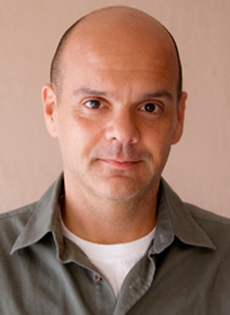
It’s a Mystery to me
Monday, May 21, 2018
Dan Gonzalez
The Church celebrates the Solemnity of the Most Holy Trinity on the Sunday after Pentecost.
By doing so, we are professing that the one God is actually the union of the Father, Son and Holy Spirit. The doctrine that God exists as three persons, but one being, is known as the Trinity.
An early church creed attributed to St. Athanasius (A.D. 293-373) succinctly sets forth the doctrine of the Trinity as it was believed by the early Church:
“Now this is the Catholic faith: We worship one God in the Trinity and the Trinity in unity, without either confusing the persons or dividing the substance; for the person of the Father is one, the Son’s is another, the Holy Spirit is another; but the Godhead of the Father, Son and Holy Spirit is one, their glory equal, their majesty coeternal.” — The Athanasian Creed
While the word Trinity does not appear anywhere in Sacred Scripture, several passages allude to the reality of a triune Godhead.
- “Let us make man in our own image after our own likeness.”— Genesis 1:26
- “In the beginning was the Word, and the Word was with God, and the Word was God.” — John 1:1
- “…I came down from heaven not to do my own will but the will of the one who sent me.” — John 6:38
- “The Father and I are one.” — John 10:30
- “Philip said to him, ‘Master, show us the Father’…Jesus said to him, ‘…Whoever has seen me has seen the Father.’”— John 14:8-9
- “The Advocate, the holy Spirit that the Father will send in my name—he will teach you everything and remind you of all that told you.” — John 14:26
- “When the Advocate comes whom I will send you from the Father, the Spirit of truth that proceeds from the Father, he will testify to me.” — John 15:26
- “Go, therefore, and make disciples of all nations, baptizing them in the name of the Father, and of the Son, and of the holy Spirit.”— Matthew 28:19
In the Gospel according to John, Jesus says to a crowd: “…I say to you, before Abraham came to be, I AM.” — John 8:58
Christ’s words are a clear reference to the book of Exodus where God reveals to Moses the Divine Name — I Am.
The crowd correctly understands Jesus’ words as a claim to divinity. In response, they pick up stones to kill him. This is something they would not have done if they merely thought he was demon-possessed or deranged. The Hebrew Scriptures are clear that death is a punishment for blasphemy, not insanity: “Tell the Israelites:…whoever blasphemes the name of the LORD shall be put to death. The whole community shall stone him; alien and native alike must be put to death for blaspheming the LORD’S name.”— Leviticus 24:15-16
Throughout the New Testament, Jesus is worshipped — an honor reserved for God — and neither he nor the Evangelists express any reservations or objections:
- “Jesus said to him, ‘You have seen him and the one speaking with you is he.’ He said, ‘I do believe, Lord,’ and he worshiped him.” — John 9:37-38
- “The eleven disciples went to Galilee, to the mountain to which Jesus had ordered them. When they saw him, they worshiped…” — Matthew 28:16-17
Jesus also forgave sins, which, according to Jewish belief, only God could do: “Why does this man speak that way? He is blaspheming. Who but God alone can forgive sins?” — Mark 2:7
Although the word Trinity is not in the Bible, the substance of its doctrine is. That the singular God is composed of three distinct persons is, as theologians admit, a difficult concept to grasp. Almost every generation comes up with its own way of explaining the Trinity — all of them falling short:
Legend has it that St. Patrick, in the fields of Ireland, used a shamrock to explain the concept of the Trinity to unbelievers. He would hold up a shamrock and challenge his audience: Is it one leaf or three? Their reply: It is both one leaf and three. Patrick would conclude his analogy: And so it is with God.
To take an analogy from science, the Trinity has been likened to the three states of matter in water. Below freezing, water is a solid taking the form of ice. If the ice melts, it becomes a liquid — water. If the water is heated to its boiling point, it takes on its gaseous form — water vapor, more commonly known as steam.
The Trinity has been compared to the nature of light. In some instances, light behaves like a wave, similar to the ripples on a still pond. At other times, light has the characteristics of particles — like water sprayed from a hose. Whether it is as a wave or as particles, light is a transmitter of energy.
Others use the sun as a symbol for God the Father. The light that falls to earth is God the Son — the second person of the Holy Trinity. The heat that is transmitted by the light is the Spirit. Using this analogy, God the Father is the giver of the light of Christ, who, in turn, ushers in the warmth of the Holy Spirit.
Some point to a man who is a husband to his wife, a father to his children and a son to his parents or a woman who is a wife to her husband, a mother to her children and a daughter to her parents. In both cases, it is the same person acting in three different capacities.
Despite the colorful metaphors and imaginative analogies, the Trinity is unknowable on a purely logical level. We should not think that we can ever completely understand the Trinity.
There is an old legend about St. Augustine of Hippo. While walking on the beach contemplating the Trinity, St. Augustine saw a young boy frantically digging a deep hole in the sand. The boy ran out into the waves, scooped up a bucket of water, and ran back to pour it into the hole. He did this a few more times until St. Augustine approached him and asked, “What are you doing?”
“See that ocean out there?” The boy asked. “I’m going to pour that ocean into this hole.”
“That’s impossible,” said Augustine. “You cannot fit the entire ocean into that tiny hole.”
The boy said, “And neither can you, Augustine, fit the Trinity into your mind.”
The legend says the boy then disappeared, as he was an angel in disguise.
The Church teaches that the Trinity goes beyond the boundaries of human comprehension:
- “The mystery of the Most Holy Trinity is the central mystery of Christian faith and life. It is the mystery of God in himself. It is therefore the source of all the other mysteries of faith, the light that enlightens them.”— Catechism of the Catholic Church #234
- “The Trinity is a mystery of faith in the strict sense, one of the ‘mysteries that are hidden in God, which can never be known unless they are revealed by God’…his inmost Being as Holy Trinity is a mystery that is inaccessible to reason alone or even to Israel’s faith before the Incarnation of God’s Son and the sending of the Holy Spirit.” — Catechism of the Catholic Church #237
In short, the Trinity is not a problem to be figured out, but a mystery. It is said that we solve problems, but we must stand in awe before mysteries.


Comments from readers